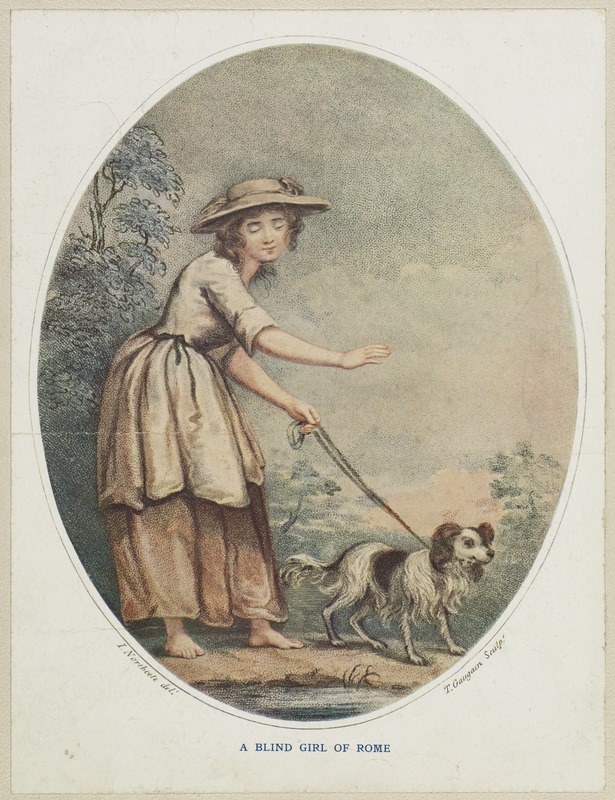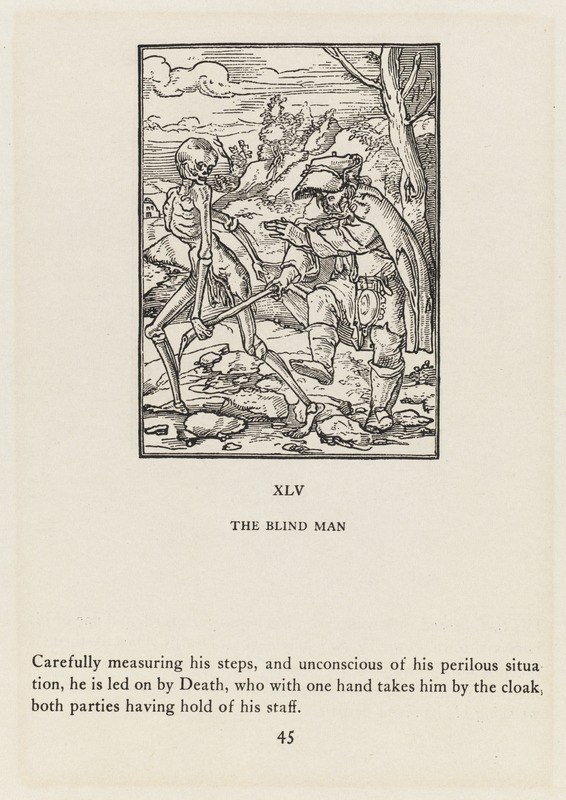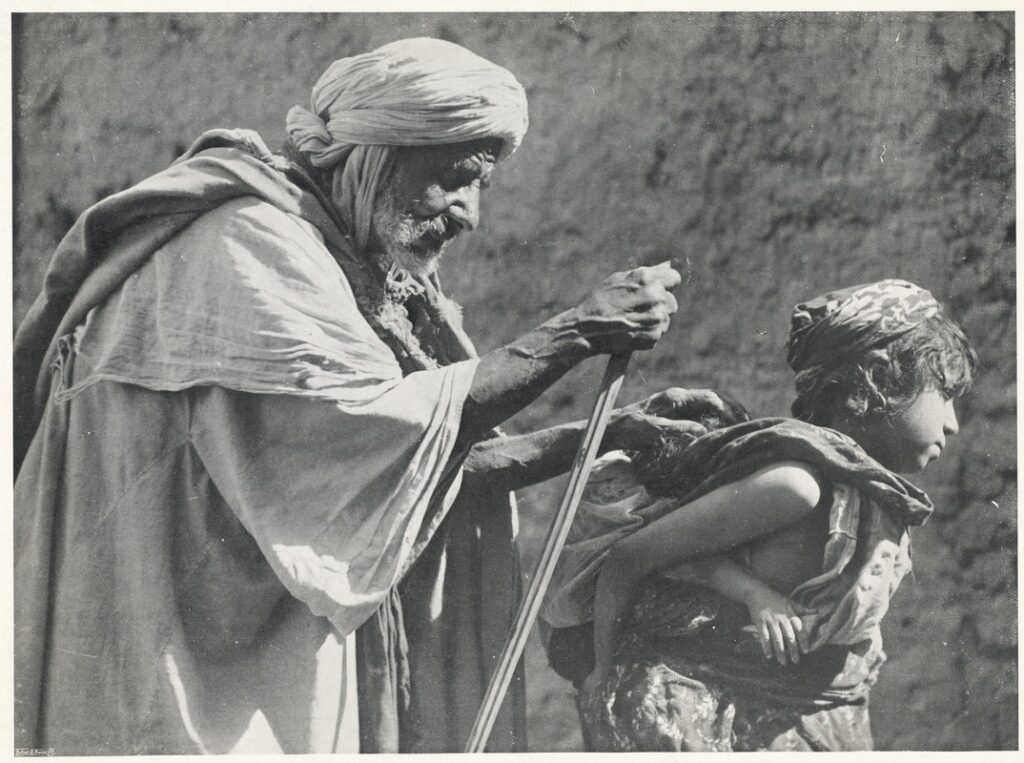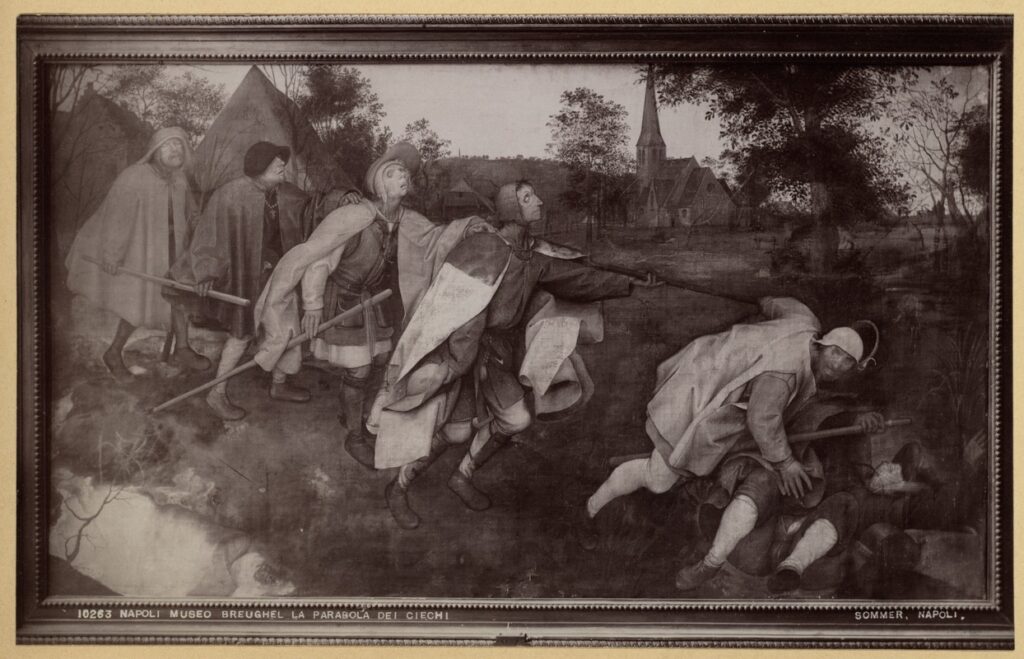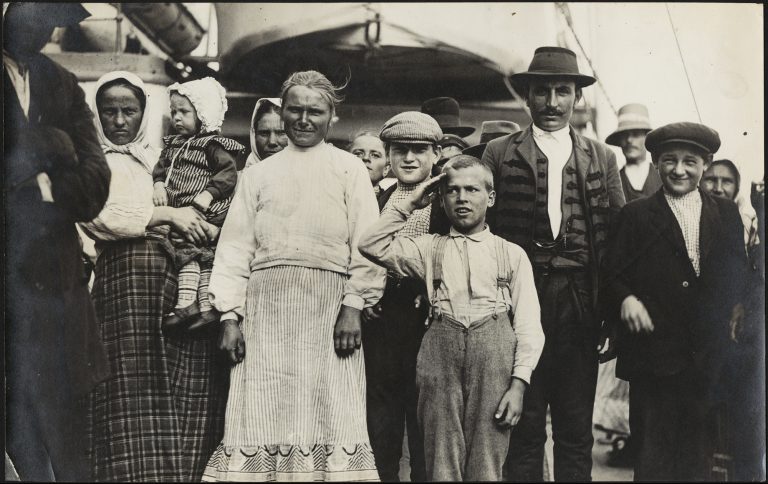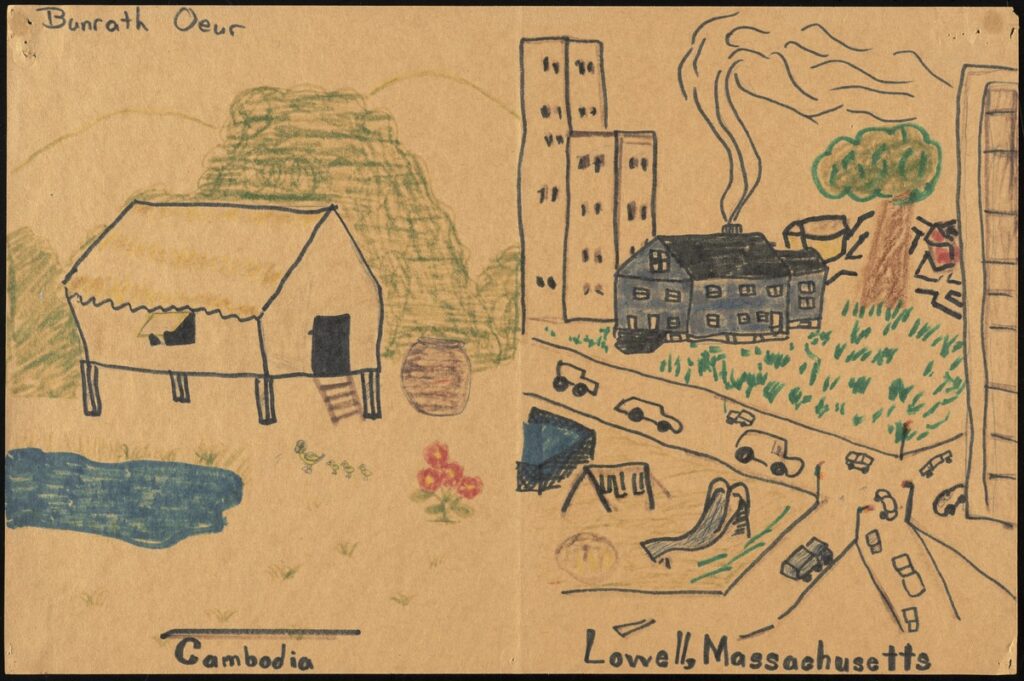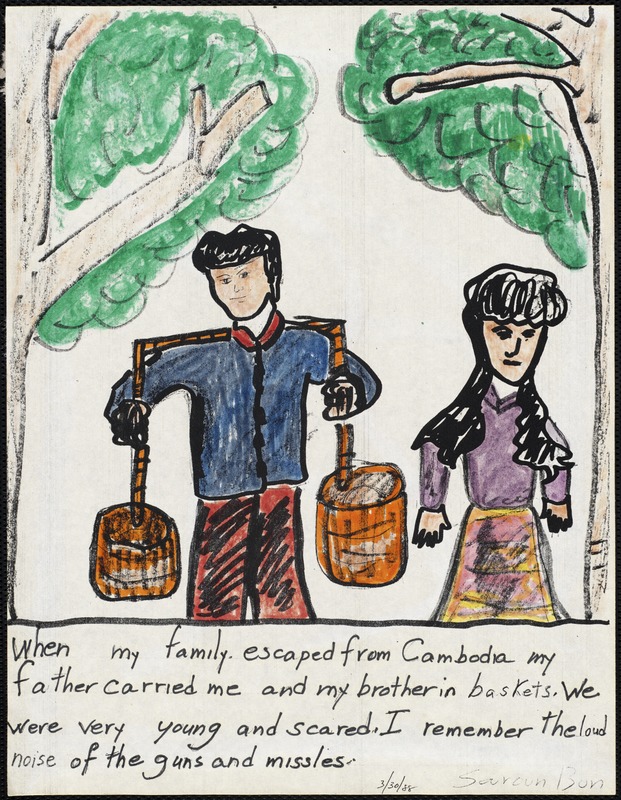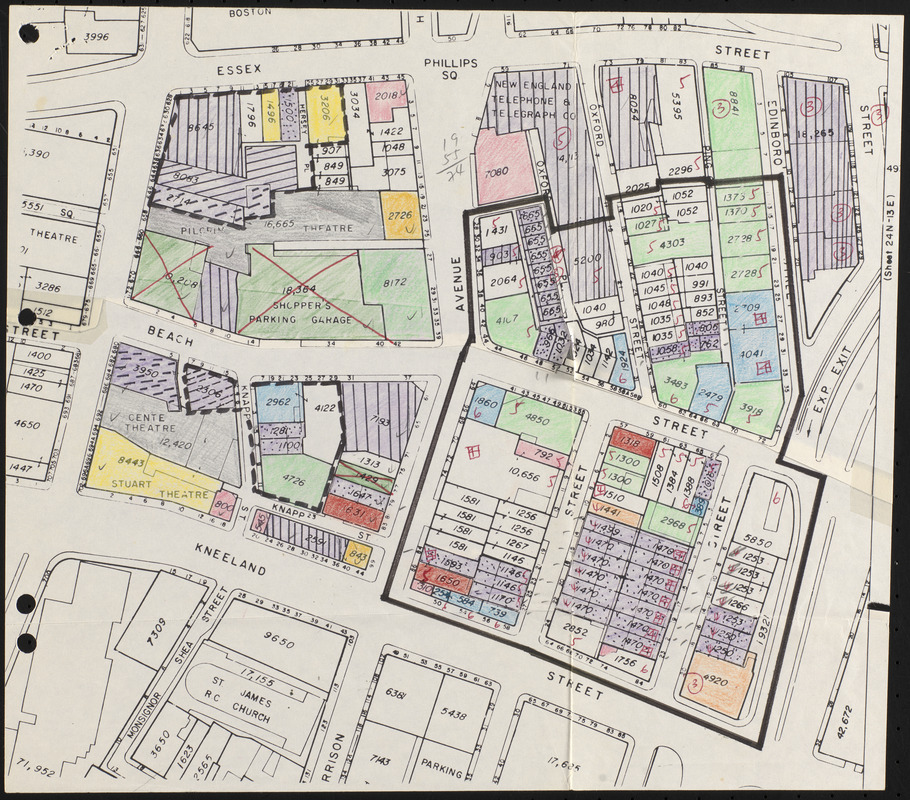Blindness and visual impairment have existed as long as humans have. In response, people have long sought to create accessibility aids to help themselves to get around more easily. Perhaps surprisingly, many of the aids used throughout history are similar – if not identical – to those used by visually impaired people today.
The images featured above come from a collection held in the Perkins School for the Blind. Starting in the late 18th century, some blind and visually impaired people were able to attend schools where they were educated in reading, writing, math, science, and the arts, among other subjects. Perkins was the first such school in the United States, founded in Watertown, Massachusetts in 1829. Today, in addition to educating hundreds of students, both on- and off-campus, the school is home to the Hayes Research Library and a unique and diverse collection: The Blind in Art. It holds prints, photographs, and objects depicting blind and visually impaired people from around the world and dating back as far as the 13th century.
Included in many of these items are representations of accessibility aids. Canes are perhaps the most obvious of these, used just as often today as they were throughout history. A Chinese scroll from the 13th century (above, bottom right) and a black-and-white photograph from the 19th century (above, top right) both show a blind man using a cane alongside another accessibility aid. The man in the first print, however, uses his cane to feel the ground in front of him, while the second man uses his for balance or to steady himself. Both works also show their subjects being guided: the former by a dog and the latter by a sighted child. Another guide dog appears in the print A Blind Girl of Rome (above, top left). Although lacking a cane, the girl is guided by a dog as she uses her arms to feel for any obstacles in front of her.
Alongside depictions of genuine accessibility aids and guides, the collection holds allegorical works, which often depict their blind subjects being guided unsafely. For example, The Blind Leading the Blind (above, bottom left) is one of a genre of prints that depict the biblical story known by the same title. While the phrase “the blind leading the blind” is often used metaphorically – to describe listening to or taking advice from someone who also knows nothing about the topic – in this work, the subjects are literally blind. The six blind men are being led astray by each other, all trusting a guide that cannot see. The first two of these men are falling down, tripping over the ground and each other.
The Dance of Death (above, middle) also shows a blind man trusting a dangerous guide: death itself, illustrated as a skeleton. The caption, which reads, “Carefully measuring his steps and unconscious of his perilous situation…” – implies that he is being led into danger. Although both humorous and macabre, these allegorical prints reinforce the importance of good accessibility aids.
Today, accessibility technology is more advanced and often relies on digital technologies. Released in 2015, the smartphone app Be My Eyes helps blind or visually impaired people identify objects or read labels with help from sighted volunteers. Another example is the creation of robotic guide dogs, such as Theia, that do the job of living guide animals without the monetary cost associated with a living creature. An exploration of the Blind in Art collection makes clear that although such modern accessibility aids are groundbreaking, they are merely new versions of technologies that blind people have used for centuries.
-Charlotte Berman, Wheaton College (Norton, MA), Class of 2023
Bibliography
Be My Eyes. “Our Story.” https://www.bemyeyes.com/about
Digital Commonwealth. “Blind in Art Collection.” https://www.digitalcommonwealth.org/collections/commonwealth:pr76ff99b
Perkins School for the Blind. “Hayes Research Library.” https://www.perkins.org/history/visit/research-library
Assistive Technology. “Prototype: “Theia” Is A Robotic Guide Dog That Helps Blind People Navigate.” https://assistivetechnologyblog.com/2020/10/prototype-theia-is-a-robotic-guide-dog-that-helps-blind-people-navigate.html
NPR. “Help A Blind Person Identify Everyday Things, Via Smartphone App.” https://www.npr.org/sections/alltechconsidered/2015/12/15/459870958/help-a-blind-person-identify-everyday-things-via-smartphone-app
